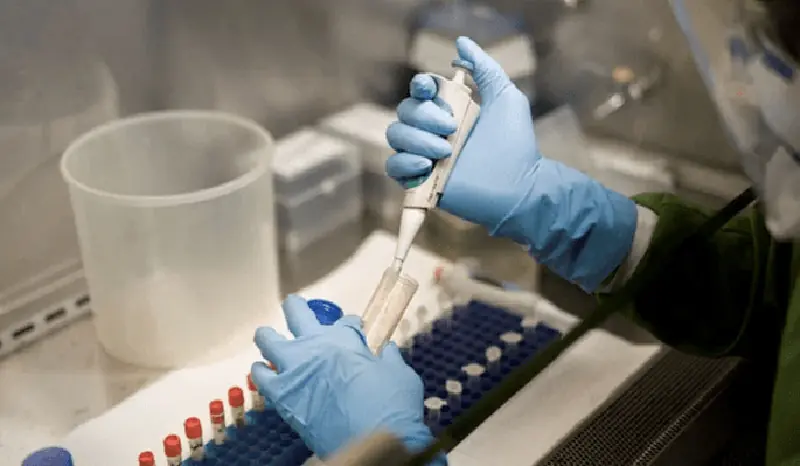Officials provided a timeline of the 1991 murders of four teenaged girls in Austin, Texas, after identifying a suspect in the killings last week, and described him on Monday as a potential serial killer who is linked to multiple cases around the country.
On Friday, police named Robert Eugene Brashers — who died in 1999 — as a suspect in the quadruple murder, citing DNA tests. The announcement came amid renewed attention on the case following last month’s release of the HBO documentary series, “The Yogurt Shop Murders.”
On Dec. 6, 1991, Amy Ayers, 13; Eliza Thomas, 17; and sisters Jennifer and Sarah Harbison, ages 17 and 15, were bound, gagged and shot at the I Can’t Believe It’s Yogurt store where two of them worked. The building was then set on fire.
According to Austin Police Department Cold Case Detective Daniel Jackson, who spoke at a news conference Monday, a perpetrator had entered the store or remained there until closing time. No other customers were present at the time.
The four girls were found nude, having been tied up with their own clothing, Jackson said.
“There was evidence of sexual assault,” he said. “All four have been shot in the head with a .22 caliber pistol, and Amy was also shot with a .380 pistol, and then the building was set on fire before the suspect left the scene.”
DNA technology was basic at the time, but detectives collected swabs which were tested years later, Jackson said. The case tripped up investigators for years as they waded through thousands of leads, several false confessions and badly damaged evidence from the burned-out crime scene.
“Some of the only physical evidence that was recovered was one spent .380 shell casing that was located in the floor drain,” Jackson said. “There were no .22 caliber casings recovered, and the fire — and then the water from the fire department — basically destroyed pretty much anything else that you were going to try to collect or try to process this crime scene.”
A breakthrough 34 years later
Four males were arrested in connection with the murders, with two eventually being found guilty because they confessed to the crime and implicated each other, Jackson said. One received life without parole while the other received the death penalty, but there was never any physical evidence linking them to the yogurt shop. After the landmark supreme court case Crawford v. Washington barred using an individual’s written or videotaped statement against another individual, a new trial was granted for the two men.
In preparation for the new murder trials, the district attorney’s office and police set out to reexamine the sexual assault kits from the case with Y STR testing, which looks at genetic information on the male chromosome.
All four original suspects were excluded from the Y STR profile, and in 2009 all the charges against them were dropped pending further investigation, according to Jackson.
Over the next several years, investigators DNA tested hundreds of people trying to find a match with no luck.
Jackson took over the case in 2022 and in June 2025, submitted the .380 casing found in the floor drain to the National Integrated Ballistic Information Network (NIBIN) system to see if it could be connected to other shell casings and crimes, he said. The test got a hit out of a case in Kentucky which had also gone cold, and investigators worked together, testing evidence to see if the perpetrators were the same.
Jackson also reached out to all labs in the country who do Y STR testing and a match was found out of a South Carolina lab connected to a 1990 sexual assault and murder in Greenville. The DNA evidence linked Brashers to that Greenville assault and murder.
Through conversations with the South Carolina police department, Jackson found eerie similarities between the cases in Greenville and Austin, including that the victims had all been bound with their own clothing.
That same DNA profile linked Brashers to a 1998 shooting of a mother and daughter in Missouri and the 1997 rape of a 14-year-old in Tennessee.
‘They had a serial killer’
Brashers had been arrested in 1985 after shooting a woman who rejected his sexual advances in Florida and was sentenced to 12 years in prison, but only served four, according to Jackson. He was out on parole in May 1989.
Brashers died by suicide in 1999 after shooting himself during an hours-long standoff with police in Missouri.
“After he died, basically, DNA linked multiple unsolved murders and sexual assaults across the country to him,” Jackson said. “Between 2006 and 2017, they knew that they had a serial killer in these different jurisdictions, but they didn’t know who he was.”
Through genealogy testing of Brasher’s family members, and a knowledge of his violent history, a decision was made to exhume his body from Arkansas, Jackson said. In 2018, the biological evidence linked Brashers to sexual assaults and murders he never had to stand trial for.
Brashers’ DNA was eventually found in three of the yogurt shop girls’ sexual assault kits and in Amy Ayers’ fingernail clipping, which was retested recently, Jackson said.
“And it matched so that it’s two-and-a-half million to one, that it’s likely Robert Brashers underneath Amy’s fingernails,” he said.
The DNA evidence and Brashers’ crime habits, including tying victims up with their own clothing, carrying multiple weapons and never having an accomplice, cemented his involvement in the 1991 yogurt shop murders.
“We have a documented case … He controlled four women alone, tied them up and sexually assaulted one of them in 1997 in Memphis,” Jackson said. “So, that’s something he’s able to do.”
His daughter, Deborah Brashers, said she believes her father could be responsible for the yogurt shop killings.
“It sounds like my father,” she told NBC News.
Deborah Brashers called her father “a coward” for his actions.
“He deserves to be here and be put through whatever he put other people through,” she said.
Jackson said solving the case required a combination of technology, good police work from multiple agencies, cooperation and timing.
“I’m sorry that it took 34 years for us to get here, but we’re here now,” Jackson said. “And, you know, Amy’s final moments on this earth were to solve this case for us. It’s because of her fighting back.”
The investigation into the murder is still ongoing, officials said.
Family members of the slain girls also spoke at Monday’s news conference.
Barbara Wilson, the mother of Jennifer and Sarah Harbison, expressed her gratitude for the police department and the recent developments in the case.
“It has been so long, and all we ever wanted for this case was the truth,” she said.
Eliza Thomas’ sister, Sonora Thomas, said that while knowing what happened to her sister eases her suffering, it does not change her reality.
“Our reality doesn’t change after today. Our families are still too small, still missing an essential ingredient, and we are lesser for it,” she said. “We have been robbed of a life with nieces and nephews and grandchildren and with sisters to grow old with this sort of mindless violence continues to steal from all of us.”
Source link

